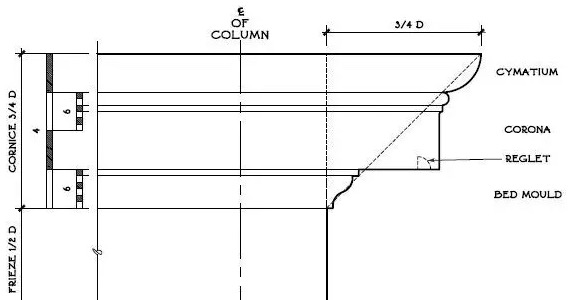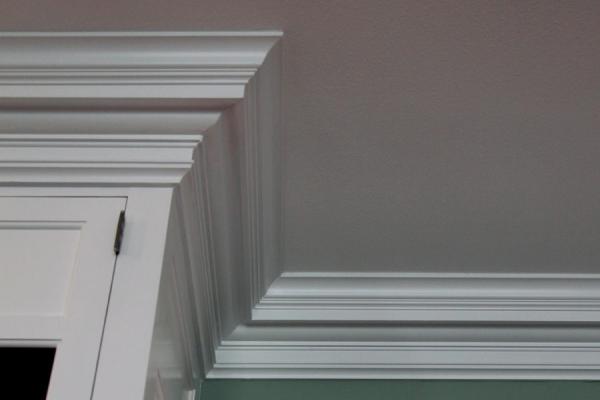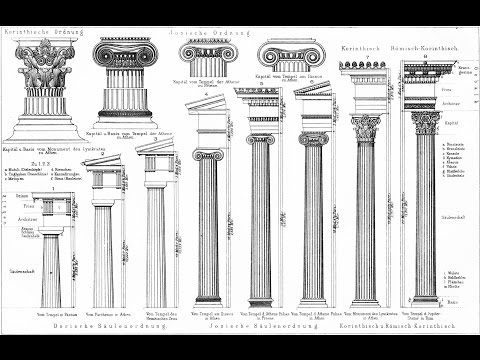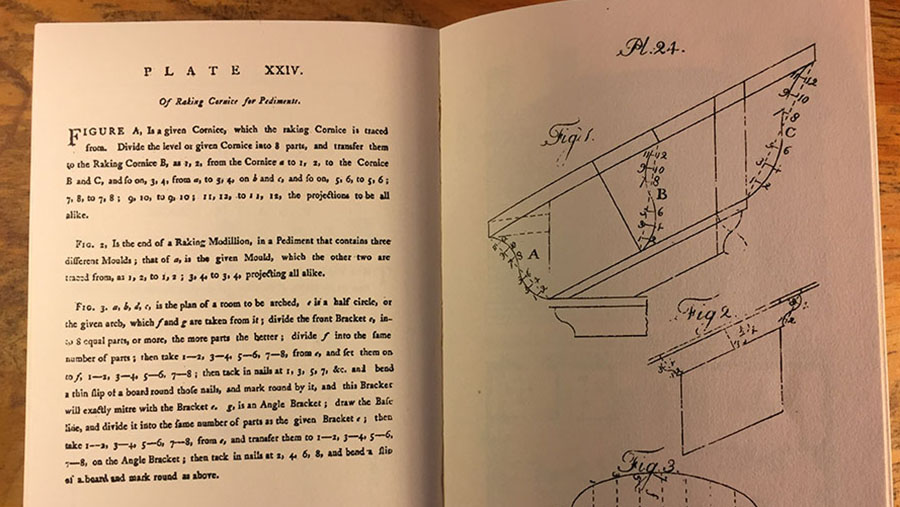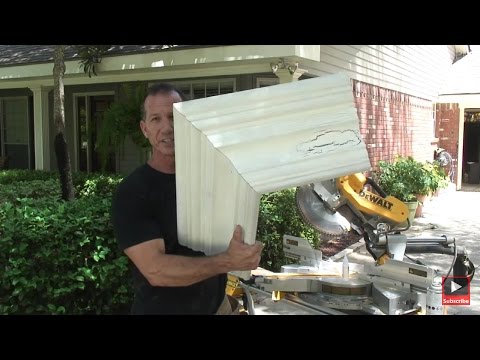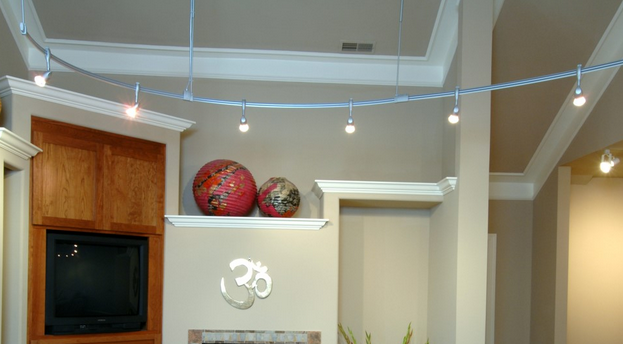Look at walls like they're Classical columns to find the right proportions and shapes
Crown molding is a common trim upgrade that can really make a room pop. Elaborate cornices can be made by combining a few different pieces of molding for a 'built-up' look. This is a great way to get more from less, but it is also a common way to make a clean wall look muddy.
Lucky for us, there are rules of order for moldings, and they were carved in stone a long time ago.
This article is a subset of those rules. It is more like a reminder of how to follow the rules that already exist
Crown molding design rule 1: The parts should reflect the whole

A quick review of the classic architectural traditions shows a unity and harmony of parts.
The ancients viewed the human body as the model for design. Just as hands, feet, arms, and legs are proportionally related, so too in ancient buildings are the parts related to one another—both in style and proportion.
The forearm is 1.6 times longer than the hand. Each knuckle on your finger are 1.6 times larger than the previous one. This 1:1.6 ratio is called the Golden Ratio, and the ancients built rules of architectural proportion based on it, too.
A look at the Tuscan Order shows this proportional relationship at work.
All the parts of the order relate to the column's diameter, labeled as “D” in the diagram.
Note at the bottom, the base is 1/2 D. The size of the base in this example will be 1/2 the size of the diameter of the column.
The shaft is 6D. The Capital, Architrave, Frieze, and Cornice also are based on the diameter of the column.
This means that all of the parts are unified and scaled harmoniously.
Crown molding on a wall represents part of the cornice of a column, but because you can't (usually) measure the diameter of a wall, you have to back-calculate the 'diamerer' measurement.
For an eight foot wall, 96 inches = Base (1/2 D) + Shaft (6D) + Capital (1/2D) + Architrave (1/2D) + Frieze (1/2D) = 8D; D=12 inches for the Tuscan Order, the Cornice (3/4D) should be about 9 inches tall.
As you can see, the Tuscan Cornice is made of three moldings:
- Cymatium: 3/8D
- Corona: 3/8D
- Bed Mold: 1/4D
The moldings that are used to make the various parts is not a crap shoot. They are predictable.
Crown molding design rule 2: Pause to reflect

White space matters in moldings, too. Notice how many flat plane surfaces make up the entablature above.
These flat surfaces are not places where the ancients forgot to add profiles. Instead, they play a purposeful part in the overall design.
Moldings are a language—they communicate and have personality.
Really.
Try to visualize the flat plane areas as pauses, or breaks, between words in a sentence.
Insteadoftalkingrealfastandnotpausingtotakeabreath.
The flat areas help our eyes read the moldings and understand what they are saying.
This sheet of classical molding shapes from ICAA begins with flat plane surfaces—pauses that are designed into the classical language.
Plane surfaces are as much a part of a good molding as a cove or ovolo.
Crown molding design rule 3: More contour is not better, it is worse

Over the last 20 years, moldings—and especially crown moldings—have morphed and mutated into silly, bumpy masses. They are often shaped with haphazard bellies, bruises, corners, and angles, all meant to look like many moldings were used.
This has grown from a misguided line of thinking that more moldings mean more quality.
Builders have begun to use two heavily figured moldings to make a crown look like it has six or seven smaller pieces—to make up a 'masterful' cornice at a fraction of the cost.
Don’t be fooled.
The drawing here is an actual sketch of phony-crown that I saw on a jobsite in Austin, TX. Even though it scaled nearly 9 inches across, it was made with only two bumpy moldings joined together.
The upper (angled) piece is a new “super-crown” from a building supply store. It is packed with too many shapes. The lower molding is a busy door casing.
Door casing is not crown molding (and it is not baseboard, either).
Moldings should be readable. In other words, their shapes should communicate a clear message. The parts of the message should be proportional to the whole.
The pictures below highlight the difference between good crown molding and bad crown molding.

The cornice on the left has many profiles that are difficult to read. Look to the far left, see all the lines on the wall? Without seeing the corner profile, it is nearly impossible to tell what the molding is saying.
The cornice is made from a single large crown molding, sandwiched by panel molds and dentils. The proportion of the parts is all wrong. And there is no pause.
The cornice on the right is simple and easy to read. Note the pause (Rule 2)—the long flat shape (the corona) gives our eyes a rest. We can read the composition because the pause gives our eyes a place to rest.
Note too, there is a harmony between parts (Rule 1) The size of the moldings are proportional to one another.
Bad crown molding is like an avalanche of dips and turns. Except that avalanches follow the golden ratio, too.
—Brent Hull, Master Craftsman and nationally recognized authority on historic design and architecturally correct molding and millwork. Author/ Co-Author of four books, including his most recent book, Building A Timeless House in and Instant Age, is available here. His company, Hull Historical is located in Fort Worth, Texas. This article is reprinted with permission from Brent. It originally appeared here.
